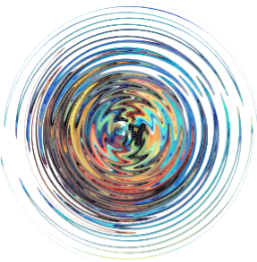Let's Be Better Humans
When you get lost in the service of helping others,
it’s a good place to get lost.
Jon Linton
After the death of a friend who had become homeless due to an addiction, Jon Linton wanted to do something to help the homeless in Phoenix, Arizona. He began to take photographs of people living on the street to document their plight, and he volunteered at a local shelter.
When he introduced himself to a man who had given him permission to take his photo, Jon asked his name. The man wept, and he said, “You have no idea how long it has been since someone cared to ask my name.”
That was the beginning of Jon’s “I Have a Name project.” He wanted to restore dignity, compassion and understanding for those who were often treated as if they did not exist. When we know a person’s name, we acknowledge their humanity. We see them as more than an anonymous face in a sea of faces that we try not to look at because the reality of their lives is too difficult for us to respond to.
“When you look around here, you get a real sense of suffering,” Jon said. “It’s an indictment against a first world country when we allow elderly women to call the streets home.”
With a passion to increase public awareness of the human tragedy of the lives of homeless people, Jon created an extensive exhibit of his photographic portraits of people living on the streets of Phoenix, along with the stories that some of his subjects chose to share. He believed that, if he could show people their humanity, more people would be inspired to volunteer with services that provide support for them and to advocate for policies that would help to get them into homes.
After taking his exhibit to several cites across The United States, Jon wanted to expand his service. In 2014, he founded “Let’s Be Better Humans,” a not-for profit organization that “directly supports the return of dignity to those in need.”
“We all strive for purpose and understanding, to hear and to be heard, to see and to be seen, to leave this world a better place than we found it,” Jon says.
Let's Be Better Humans is a reminder that “we exist for one another, that we can make a difference. In short, we are a revolution in love and humanity.”
That vision inspired folks at The Southwest Institute of Healing Arts, and they provided funding for what Jon called “the Magic Bus.” The bus enabled him to deliver food, water, clothing, and other essential items to the less fortunate in Arizona and California and other parts of the western United States.
Jon’s expanded vision included other groups of people that he saw being treated as less than human. He participated in peaceful actions against deportation, bigotry and isolationism, and he joined in supporting “our friends from Planned Parenthood, the LGBTQ, Native American, Muslim and communities from every race, creed and color.”
He believed that it was necessary to embrace the ideals of bridges over walls in his efforts to give a voice to “the downtrodden and the silenced.”
Jon’s vision found another outlet in 2016. Wayne Rainey, owner of MonOrchid art gallery in Phoenix’s Roosevelt Row Arts District, wanted a large mural on an outside wall of his gallery. He collaborated with Jon and Phoenix artist Brian Boner to create “The Garden,” in honor of people who have died on the streets, “often unnoticed and unacknowledged.”
Photo Credit: Fine Line Photography
A red-headed boy is tipping a watering can from which hundreds of black birds spill out and fly onto the white wall of the building. The boy is standing on top of these words from Mother Teresa:
At the end of life, we will not be judged by how many diplomas we have received, how much money we have made, how many great things we have done.
We will be judged by “I was hungry, and you gave me something to eat, I was naked, and you clothed me. I was homeless, and you took me in."
At the side of the mural is a plaque,
"In honor and remembrance of those who have perished homeless on our streets."
"To me,” Jon said, “the birds represent freedom from poverty and oppression for the homeless. They're emblematic of those who have perished from it and are now in flight to a better place."
Brian Boner said that the boy spreads "a message of tolerance, compassion and humanity to the masses.” It also serves to create dialogue about the unresolved issue of homelessness.
Kindness does not require anything more from us, but it does invite us to find ways that we can be of service to people who are less fortunate than we are. We have been inspired by many of our friends on the street, and we believe that you will also discover that, as you reach out with love, you will find new, unexpected friends.
Let’s consider the invitation to be better humans, in whatever way that is right for us. We’ll be glad that we did.
Photos from Jon Linton
There is a lot more to this story. Click below to see more photos and learn more about Jon’s journey
I Have a Name video
The I Have a Name Project
The Garden” mural on MonOrchid
Let’s Be Better Humans website
What are your thoughts? Please leave a comment below.
Help us spread the message of kindness. If you know others who might appreciate these ideas, please share below.


